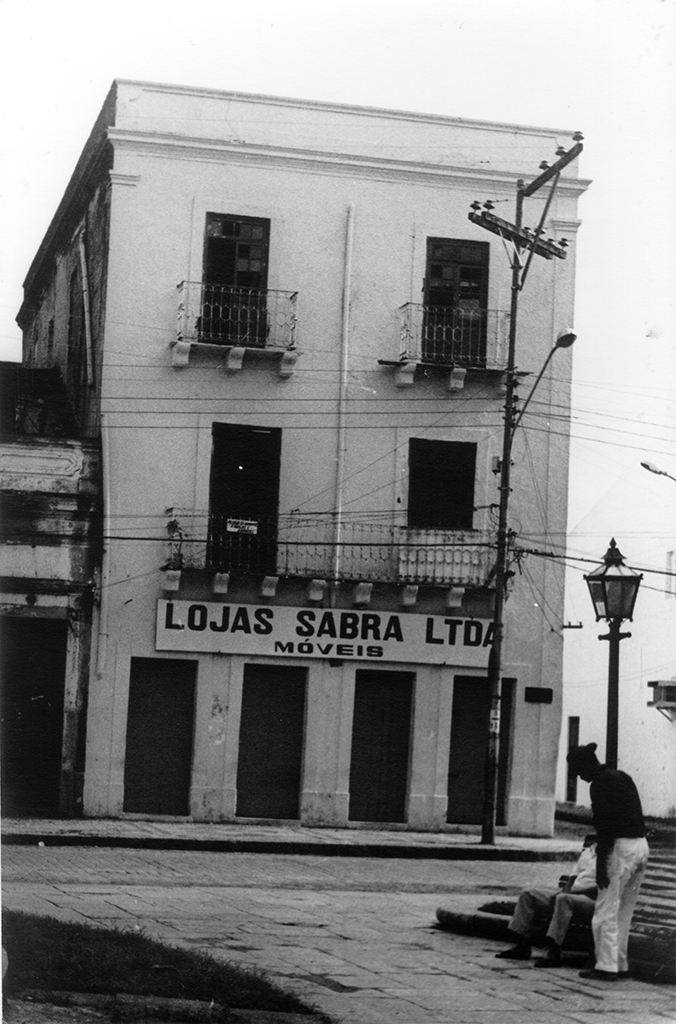IMS, Equipe. Clarice in Princeton's Network. IMS Clarice Lispector, 2022. Disponível em: https://site.claricelispector.ims.com.br/en/2022/12/08/clarice-in-princetons-network/. Acesso em: 27 July 2024.
IMS: What is the Brazil LAB and how long has it existed?
João Biehl: The Brazil LAB is an interdisciplinary initiative at Princeton University that considers Brazil to be a crucial nexus for us to understand today’s most pressing issues. Based at PIIRS (Princeton Institute of International and Regional Studies), the LAB brings together professors, researchers, and students from more than 20 different university departments (from the social to the natural sciences, from engineering to the arts and humanities) in interaction with dozens of researchers from academic institutions of excellence (such as the Brazilian National Museum, the University of São Paulo (USP), and the Brazilian Center for Analysis and Planning (CEBRAP), as well as non-profit research organizations in Brazil (for example, MapBiomas, Imazon, Igarapé, Serrapilheira, and the Moreira Salles Institute itself, among others).
The Brazil LAB’s studies focus on themes such as climate change and Amazonian tipping points, inequalities and the legacy of slavery, democratic fragility, and emerging forms of social mobilization and cultural expression. In an iterative way, our research is marked by the critique of hegemonies and the crossing of multiple intellectual traditions, with special attention to historically marginalized perspectives in academia.
IMS: How did the idea for the new platform arise and how can it be accessed?
João Biehl: The project began on the centenary of Clarice Lispector, in 2020, with a series of events, starting with the launch of the Clarice 100 Ears sonic library, conceived by the literary critic Marília Librandi.
Marília Librandi: Based on the expression “written by ear,” we posed the question “What does Clarice whisper in your ear?”, and we created this sound play, in English, between 100 years/100 ears. The platform presents artists, scholars, and appreciators of Clarice’s work, in Brazil and around the world, reading their favorite passages in multiple languages. The audio-sound tribute to the centenary also resulted in a musical concert, “Agora Clarice” (Now Clarice), with Beatriz Azevedo and Moreno Veloso, accompanied by the musicians Jaques Morelenbaum on cello and Marcelo Costa on percussion, and with the participation of Maria Bethânia interpreting texts by Clarice. Released on vinyl, it presents the unreleased song, “Amar não termina” (To Love Never Ends), inspired by the texts of Clarice Lispector.
João Biehl: This initiative managed to bring together a number of people from the most varied nationalities, who recorded in audio beautiful readings of the writer’s texts (some even translated texts into their native language, such as Hindi). This allowed us to establish a wonderful collection that today includes recordings in languages such as, in addition to Portuguese, English, French, Spanish, German, and even Ukrainian, the writer’s mother tongue.
The enthusiasm with which the project was received by researchers and artists – writers, musicians, and actors and actresses – made us see how important and beautiful it would be to expand it even further, making it possible to reach an even greater number of people in Brazil and abroad. The first to gift us with a beautiful reading in video of a text by Clarice was Chico Buarque, who, at the invitation of our colleague Pedro Meira Monteiro, director of the Department of Spanish and Portuguese at Princeton, recorded the chronicle “The Waters of the World,” from the book Onde estivestes de noite (“Where You Were at Night”), from 1974. In that same book, Clarice published a letter that she received from Fernanda Montenegro, which gave us the idea of inviting her to also perform a reading. Fernanda liked the invitation so much that she asked us for a few months of time, since she wanted to dedicate herself to new studies of Clarice’s work, which shows the seriousness and dedication that make Fernanda Montenegro the artist that she is, besides demonstrating an emotional devotion and respect for the literature of Clarice.
In our contacts with Fernanda Montenegro, we also spoke with Fernanda Torres, who likewise surprised us immensely. Instead of a small excerpt from “The Egg and the Chicken,” Fernanda Torres decided to interpret the entire text, beautifully, as if it were a theatrical play. From then on, we gathered fabulous tributes from actors such as Lázaro Ramos, Rodrigo Santoro, Zezé Motta – who today lives in the apartment where Clarice lived in Rio –, among many other actors who are on our clarice.princeton.edu platform. It is open to anyone who wants to get to know this exciting tribute, just as it will be an immense pleasure to receive new contributions in our sonic library. People interested in adding their voice to this collection only need to access the 100 Ears section and we will contact them.
IMS: Is Clarice Lispector read in the United States? How has she been received by the public and scholars in the U.S. and in English?
Marília Librandi: Today, Clarice is part of the mainstream of the great world writers celebrated in the United States. Reviews of her books have been published in the most prestigious periodicals such as the New York Times and the Los Angeles Review of Books, among many others. Today Clarice is also a constant presence in doctoral research in the Departments of Comparative Literature, and of Spanish and Portuguese, in English. This year, the volume After Clarice: Reading Lispector’s Legacy in the Twenty-First Century was released, edited by Adriana X. Jacobs and Claire Williams, and based on a colloquium held at the University of Oxford, in England. My book, Writing by Ear: Clarice Lispector and the Aural Novel (2018), has just been considered one of the six most important studies, in English, on listening in the literature by Lispector (cf. Tamara Mitchell, in a review published in the Latin American Research Review, 2022). The biography written in English by Benjamin Moser, published in 2009, and the new translations of her work by the publisher New Directions, attained both critical and public success. The translators Alison Entrekin, Idra Novey, and Katrina Dodson, along with Johnny Lorenz and Stefan Tobler, contributed greatly to this expansion. Other books in English dedicated to Clarice are Examining Whiteness: Reading Clarice Lispector Through Bessie Head and Toni Morrison (2011), by Lucia Villares, Encounter Between Opposites in the Works of Clarice Lispector (2006), by Claire Williams, and Closer to the Wild Heart: Essays on Clarice Lispector (2002), co-edited by Claire Williams and Cláudia Pazos Alonso. All other monographs on Clarice in English were published more than a decade ago, including: Passionate Fictions: Gender, Narrative, and Violence in Clarice Lispector (1994), by Marta Peixoto, and Sexuality and Being in the Poststructuralist Universe of Clarice Lispector: The Différance of Desire (2001), by Earl E. Fitz.
IMS: Who are the people at the forefront of the new platform?
João Biehl: At the Brazil LAB, we work in an interdisciplinary and intergenerational way, with special attention to the inclusion of specialists from Brazil, with whom we maintain a relationship of reciprocity and constant iteration. Thus, in this great team that brings together professors, researchers, and students from several areas and different countries, we have Professor Marília Librandi, who kicked off and coordinated the project with me, and three co-organizers: Miquéias Mügge and Rodrigo Simon, both researchers from the Brazil LAB, in addition to Sérgio Bairon, Professor at the School of Communications and Arts at USP. The whole creation and development of the site was led by the designer Pietro Domiciano. And we also counted on the work and enthusiasm of three doctoral students from Princeton, one from the Department of Anthropology and two from the Department of Spanish and Portuguese: Nikhil Pandhi, Oriele Benavides, and Jonathan Romero. The overall organization, connecting all areas, was by Heloísa Krüger, a doctoral student in the Department of Portuguese and Brazilian Studies at Brown University, here in the United States.
IMS: Could you mention some highlights of the content on the new platform?
João Biehl: We were happy to gather on this platform an impressive volume of more than 300 hours of material about Clarice Lispector. In addition to the exciting interpretations of renowned artists (such as Regina Casé, Estêvão Ciavatta, Andréa Beltrão, Mariana Ximenes, and Miguel Fallabela) in the Clarice Convida (Clarice Invites) section, it presents an exciting gathering of personalities from the most diverse areas in 100 Ears, where it is possible to hear , for example, texts by Clarice in the voices of names such as the visual artist Jaider Esbell, the anthropologists Lilia Schwarcz and Aparecida Vilaça, the actress Camila Morgado, the writer Idra Novey, and the economist Paulo Valente Gurgel, Clarice’s youngest son.
Finally, I would also like to highlight the work of the designer Pietro Domiciano, who to develop the platform has done tireless work in a deep plunge into Clarice’s literature and art. Each element of the site was thought out in detail so that it was at the level of her work. From the fonts used in the texts and titles, and the colors of each section (inspired by the tones of her paintings), to very subtle details that refer to specific texts, as is the case of the thousand-pointed star from The Hour of the Star and the oval formats in honor of the short story “The Egg and the Chicken.” The sounds used on the site were thought out taking into account Clarice’s typewriter, which, according to her son Paulo, also alluded to the sound of falling rain.
IMS: What other events has the Brazil LAB organized in previous years?
João Biehl: In 2020, in partnership with the Lewis Center, the Brazil LAB organized Clarice, 100 Years: A Tribute to Her Life and Work. On the occasion, we had the honor of receiving, in addition to Paulo Gurgel Valente in an emotional statement about his mother, the translators Idra Novey (Princeton), Johnny Lorenz (Montclair), and Kadrina Dodson (Columbia) in a conversation with me and Marília Librandi. The winner of the Pulitzer Prize for Literature, Jhumpa Lahiri, also treated us to the lecture “A Five-Pointed Star for Clarice.” Finally, we had Now Clarice: A Musical Celebration, a concert by Moreno Veloso and Beatriz Azevedo, which beyond the poetic and musical beauty also allowed us the privilege of having the iconic Maria Bethânia reading excerpts from the work of Clarice Lispector.
In our efforts to decolonize the arts, we have several ongoing projects, including Espalhe Lima Barreto (Hearing Lima Barreto, in partnership with Companhia das Letras) and Poéticas Amazônicas (Amazonian Poetics), which includes the participation of Denilson Baniwa. We are also supporting events related to the exhibition The Yanomami Struggle, by Cláudia Andujar and indigenous artists from the Amazon, which will take place between February and April 2023 at The Shed, in New York, and is coordinated by Thyago Nogueira, from the IMS.
IMS: What result do you all intend to have with the publication of the new platform?
João Biehl: The Clarice platform seeks to expand ways of narrating, translating, and disseminating the life and work of Clarice Lispector, one of the greatest writers of the 20th century. With creative collaborations and engagement with a diverse audience, her novels, short stories, and chronicles now inhabit new spaces and gain more voices, and as Marília Librandi would say, “a creative listening.” This tribute from the Brazil LAB continues as an appeal for the singularity and infinitude of Clarice’s legacy, which continues to multiply reading communities. Celebrating her life and work is, therefore, a means of welcoming all immigrants, all languages, and all the silences and struggles from different places on this planet adrift.



















